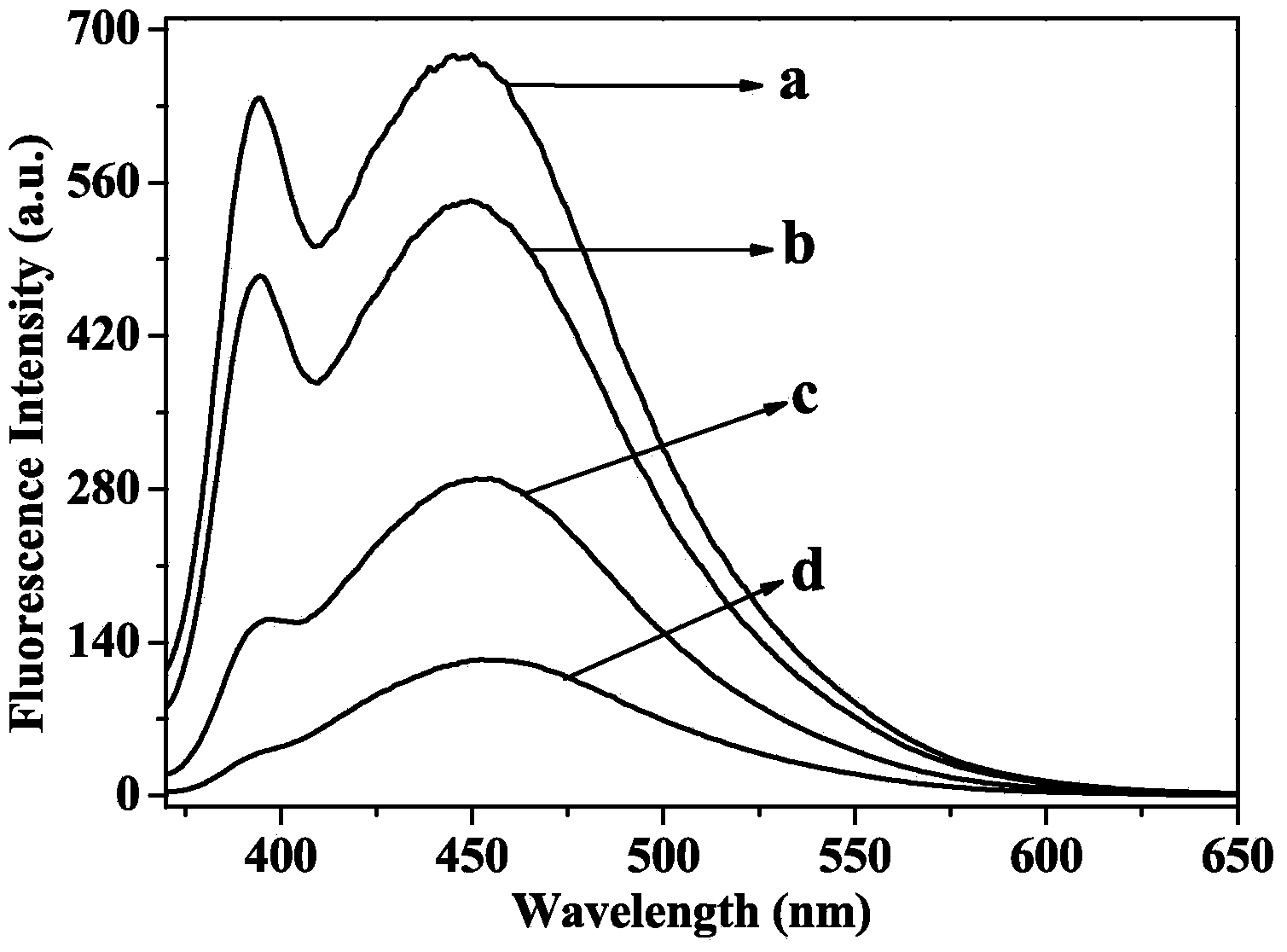Method for detecting potassium permanganate through graphene quantum dot fluorescence quenching
A technology of graphene quantum dots and potassium permanganate is applied in the field of chemical detection to achieve the effects of sensitive detection, simple and convenient detection process, and low detection limit
- Summary
- Abstract
- Description
- Claims
- Application Information
AI Technical Summary
Problems solved by technology
Method used
Image
Examples
Embodiment 1
[0018] Prepare four standard aqueous solutions, where the concentration of the graphene quantum dots is 0.1 mg / mL, add potassium permanganate solution to the graphene quantum dot solution, so that the final concentration of potassium permanganate is 0, 1×10 sequentially -5 mol / L, 1×10 -4 mol / L and 1×10 -3 mol / L, stand for 1 min, and detect the fluorescence spectra of 370-650 nm at an excitation wavelength of 345 nm, and obtain the fluorescence spectra a, b, c and d in sequence.
[0019] From the fluorescence spectrum, it can be known that the fluorescence intensity of the graphene quantum dot probe decreases with the increase of the potassium permanganate solution concentration, and the decrease of the fluorescence intensity has a good linear relationship with the potassium permanganate solution concentration, R 2 = 0.991.
[0020] The present invention uses graphene quantum dot probes as fluorescent probes to perform highly sensitive detection of potassium permanganate. The change i...
PUM
 Login to View More
Login to View More Abstract
Description
Claims
Application Information
 Login to View More
Login to View More - R&D
- Intellectual Property
- Life Sciences
- Materials
- Tech Scout
- Unparalleled Data Quality
- Higher Quality Content
- 60% Fewer Hallucinations
Browse by: Latest US Patents, China's latest patents, Technical Efficacy Thesaurus, Application Domain, Technology Topic, Popular Technical Reports.
© 2025 PatSnap. All rights reserved.Legal|Privacy policy|Modern Slavery Act Transparency Statement|Sitemap|About US| Contact US: help@patsnap.com

